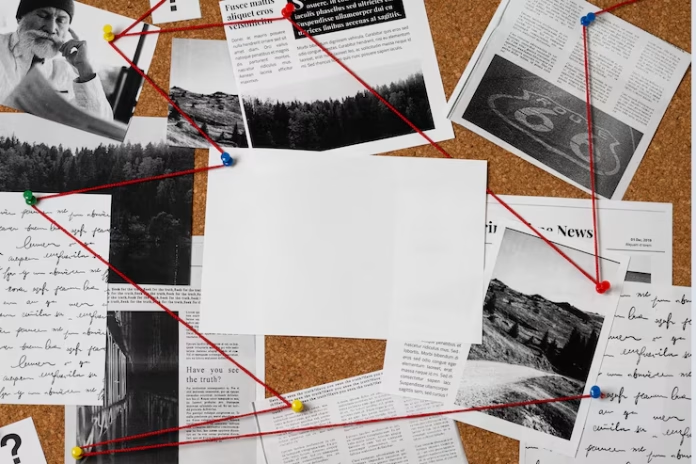Introduction
The Indian legal system is structured to ensure that justice is delivered based on credible and reliable evidence. The principle of exclusion of oral evidence by documentary evidence is a well-recognized doctrine in the law of evidence, aimed at preserving the sanctity and conclusiveness of written agreements. This principle has been retained and refined in the Bharatiya Sakshya Adhiniyam, 2023 (BSA), which replaces the Indian Evidence Act, 1872. It ensures that when the terms of a contract or grant have been reduced to writing, the written document itself becomes the best evidence of its contents, limiting the scope for oral testimonies to contradict or vary it.
Historical Background and Legal Context
The principle of the exclusion of oral evidence finds its origin in the English common law’s “Best Evidence Rule.” This rule mandates that the best available evidence, especially documentary evidence, must be produced to prove the contents of a document. In colonial India, this principle was codified in the Indian Evidence Act, 1872, under Sections 91 and 92. With the introduction of the Bharatiya Sakshya Adhiniyam, 2023, these provisions have been preserved with necessary adaptations to meet modern legal and technological challenges, particularly in the context of electronic records.
This rule evolved to prevent fraudulent claims and to promote legal certainty in contractual and property dealings. Oral evidence is more susceptible to manipulation, memory lapses, and intentional falsification, whereas documentary evidence, being permanent and recorded at the time of transaction, carries greater reliability.
Relevant Laws and Regulations
The Bharatiya Sakshya Adhiniyam, 2023, deals with the exclusion of oral evidence primarily through two critical provisions:
a) Section 91 BSA – Evidence of Terms of Contracts, Grants, and Dispositions of Property Reduced to Document
This section states that when the terms of a contract, grant, or disposition of property have been reduced to the form of a document, no evidence shall be given in proof of the terms of such contract except the document itself or secondary evidence of its contents where permissible.
b) Section 92 BSA – Exclusion of Oral Evidence to Contradict Document
This provision lays down that oral evidence cannot be given to contradict, vary, add to, or subtract from the terms of a written document.
Exceptions to Section 92:
However, there are significant exceptions where oral evidence is admissible:
– Cases of fraud, intimidation, illegality, or mistake.
– Oral agreement subsequent to the written document.
– Conditions precedent to the operation of the document.
– Custom or usage of trade.
– Ambiguity or failure of the document to reflect the true intention.
Thus, while the general rule promotes the superiority of documentary evidence, these exceptions provide necessary flexibility to prevent injustice.
Key Judicial Precedents
Indian courts have time and again upheld the doctrine of exclusion of oral evidence while ensuring that the exceptions are applied judiciously. Some landmark cases include:
a) Roop Kumar v. Mohan Thedani (2003) 6 SCC 595
The Supreme Court held that Sections 91 and 92 of the Evidence Act (now BSA) are based on the principle that the best evidence should be produced and that oral evidence cannot be permitted to alter the terms of a written agreement.
b) State Bank of India v. Mula Sahakari Sakhar Karkhana Ltd. (2006) 6 SCC 293
The Court emphasized that documentary evidence prevails over oral evidence, and unless the case falls within the exceptions, oral testimony cannot contradict written terms.
c) Union of India v. Ibrahim Uddin (2012) 8 SCC 148
This case elaborated on the exceptions to the exclusion rule, holding that where fraud, mistake, or ambiguity is pleaded, oral evidence is permissible to clarify the matter.
Legal Interpretation and Analysis
The doctrine under the Bharatiya Sakshya Adhiniyam is rooted in the necessity to protect the certainty and conclusiveness of documentary records. The courts interpret these provisions with a view to balancing the sanctity of written contracts with the demands of justice.
Where a document is clear and unambiguous, no oral evidence is permissible. However, where documents are incomplete, ambiguous, or where there is a plea of fraud or misrepresentation, oral evidence is admissible. This prevents injustice while upholding contractual certainty.
Courts have also clarified that the rule does not apply to collateral facts or circumstances that do not directly contradict the document but are relevant to its interpretation or application.
Comparative Legal Perspectives
A comparative analysis shows that similar principles operate in other jurisdictions:
a) English Law
The Parol Evidence Rule operates similarly, excluding oral evidence to alter written contracts except in cases of fraud, mistake, or incomplete agreements.
b) United States
Under the Uniform Commercial Code (UCC), oral evidence is excluded to contradict a written contract but permitted to explain trade usage or ambiguity.
c) Australia and Canada
These jurisdictions adopt a flexible approach where oral evidence is excluded in most cases but exceptions apply for misrepresentation, mistake, and illegality.
Thus, Indian law under the BSA is in consonance with international practices, with appropriate modifications for local conditions.
Practical Implications and Challenges
a) Importance in Commercial Transactions
This rule protects parties in commercial transactions from false oral claims that could disturb the sanctity of written agreements.
b) Digital Age Challenges
With the advent of electronic contracts and digital signatures, the scope of documentary evidence has expanded, raising new challenges regarding authenticity and admissibility.
c) Issues in Rural and Informal Sectors
In India, many transactions, especially in rural areas, are not reduced to writing. Strict application of the exclusion rule may create hurdles in such cases, requiring a sensitive judicial approach.
Recent Developments and Trends
The BSA has retained and strengthened this rule while accommodating modern realities like electronic records. There is increasing recognition of digital contracts, emails, and SMS as documentary evidence, which will shape future litigation trends.
Courts are also increasingly using technology to verify the authenticity of documents and applying forensic tools to resolve disputes about documentary evidence.
Recommendations and Future Outlook
– There should be greater awareness among the public about the importance of documenting transactions properly.
– The judiciary should develop clear guidelines for applying exceptions under Section 92 BSA to ensure consistency.
– The law must evolve to address emerging issues like blockchain-based contracts and smart contracts, where traditional notions of documentary evidence may be inadequate.
– Legislators may consider special provisions for informal transactions prevalent in rural India to avoid unjust exclusions.
Conclusion and References
The principle of exclusion of oral evidence by documentary evidence is vital for promoting legal certainty, transparency, and integrity in judicial proceedings. The Bharatiya Sakshya Adhiniyam, 2023, has preserved this rule with necessary safeguards to ensure that justice is not sacrificed at the altar of technicality. Moving forward, the interplay between technology and evidence law will require careful legislative and judicial attention.
References
1. Bharatiya Sakshya Adhiniyam, 2023
2. Roop Kumar v. Mohan Thedani (2003) 6 SCC 595
3. State Bank of India v. Mula Sahakari Sakhar Karkhana Ltd. (2006) 6 SCC 293
4. Union of India v. Ibrahim Uddin (2012) 8 SCC 148
5. Avtar Singh, *Principles of the Law of Evidence* (19th edn, LexisNexis 2023)
6. Sir John Woodroffe & Amir Ali, *Law of Evidence* (LexisNexis 2022)
7. Sarkar, *Law of Evidence* (LexisNexis 2023)
Also Read:
Rights of undertrial prisoners in India
How To Send A Legal Notice In India




